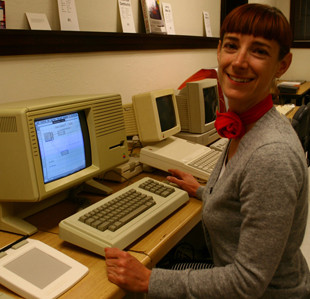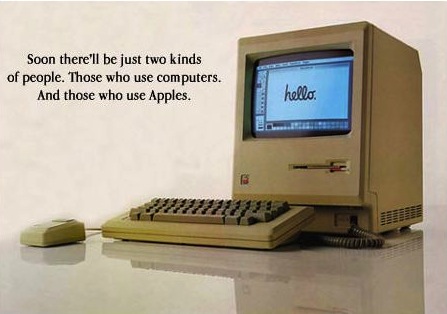Why archive dead media?
A question for Lori Emerson


A fair amount of contemporary writing and art would benefit from media-historical analysis. What media at what time made this work possible? What media are brought together in this work? When we want to analyze form in the contemporary, are we not sometimes talking about technical supports, the bridgings between various media the work relies on? Works like Goldsmith's American Trilogy for example, are not simply archiving the language we find in the books. They can be analyzed in terms of their technical supports, or the crossings of various media the enabled the art or writing to happen in the first place. American Trilogy couldn't have happened without news radio and recording technology; Chris Alexander's McNugget would not have been possible without the database management systems undergirding a social networking / micro-blogging service like Twitter; a "book" like Kieran Daly's Tentatively nullpropriated assay from Gauss PDF’s 36 (missed by two) engages so many layers of technology one might not even be able to address them all adequately in one essay.
Digital poetry, or e-poetry, began almost as soon as the personal computer became available, and was the first movement in avant-garde poetry to take advantage of the programmable nature of the computer to create works that are interactive, or use generative or combinatorial approaches to create new kinds of text and text/image objects. When we were studying together as Ph.D. students in the Buffalo Poetics Program, Lori Emerson was working on a study of e-poetry. Now she's Assistant Professor at the University of Colorado at Boulder and Director of its Media Archaeology Lab, which she describes as "trying to both preserve and provide access to several interrelated aspects of our cultural past: historically important works of electronic literature, generally from before the era of the WWW, along with the platforms they were created on and for; and historically important computer hardware and software, such as the Apple IIe, Apple Lisa, Apple Macintosh, NeXT Cube, and Hypercard." Her forthcoming monograph, Reading Writing Interfaces: From the Digital to the Bookbound (University of Minnesota Press, Spring 2014), will no doubt perform just the kind of media-historical analysis I'm looking for. But rather than wait until 2014, I asked her to share a little of her work now:
Why archive dead media?
The Media Archaeology Lab (MAL) is an open space for hands-on, experimental research and teaching actively using now-obsolete hardware and software. While the MAL does concern itself with trying to maintain access to dead media (or zombie media as nearly everything in the lab still functions) at the same as it tries to preserve early works of digital art/literature created for these dead media, it's still mostly preservation for the sake of active doing, not to create yet another museum.
In addition to landmark computers such as the Commodore 64 from 1982, the Vectrex Gaming Console also from 1982, the NeXT Cube from 1990, the lab also houses a number of working Apple IIe’s, an Apple Lisa, and Apple Macintoshes. All three computers are particularly important for understanding the history of personal computing and computer-mediated art and writing; while they were released throughout 1983 and 1984, the shift in interface from the one to the other, and therefore the shift in the limits and possibilities for what one could create, is remarkable. The Apple II series of computers all used the command-line interface and they were also the first affordable, personal computer while being open and extensible while the Apple Lisa was the first commercial computer to use a Graphical User Interface and the Apple Macintosh was the first affordable personal computer to use a GUI...one that began a legacy of the closed computer in the name of the user friendly PC encased in an aesthetically pleasing exterior that continues today with the iPad.

A work such as First Screening by bpNichol - a series of kinetic digital poems created in 1983-1984 using an Apple IIe and the Apple BASIC programming language - uniquely depends on the MAL for, the need to preserve these works aside, we cannot understand it if we view it only via a media translation. Everything about the Apple II system, its entire hardware and software system, offers both writer and reader an utterly different set of experiences than when they read or write on, say, a MacBook or a PC or when they read First Screening by way of an emulation on a system that uses a Graphical User Interface. The Apple II whirs, buzzes; the keyboard clacks; even inserting the 5.25" floppy disk puts you in direct contact with the material limits and possibilities of the computer as you wait with baited breath, listening to the scratchy sound of the computer processing the data, for the triumphant 'beep' that lets you know the disk loaded. It's a kind of friction that actually helps us understand the contours of the medium at hand that we no longer have access to in the current era of seamless computing and so-called "invisible" interfaces.

In other words, I see the MAL's collection of dead media as a thinking device: providing access to the utterly unique, material specificity of these computers - their interfaces, platforms, and software - makes it possible to defamiliarize or make visible for critique contemporary, invisible interfaces and platforms. Without having the ability to tinker with the countless different computers and operating systems that existed in the late 1970s to the mid-1980s, without actually experiencing what it's like to operate a computer whose target audience is the DIYer, the tinkerer, the curious, I would never have understood to the extent that I do now the way in which an ideology of the user-friendly now determines the shape of contemporary computing - in which we are mere consumers of readymade content and 'user-friendly' is largely a marketing slogan.
Gossip or history